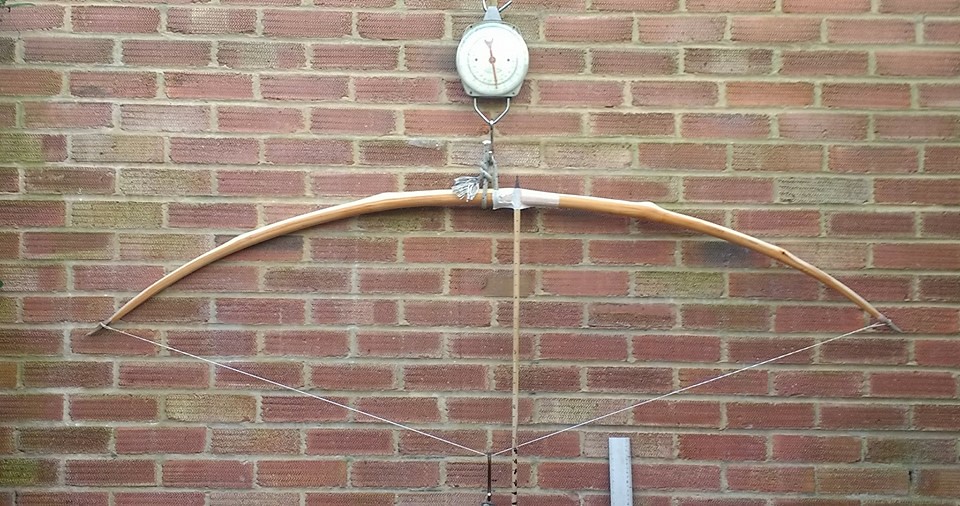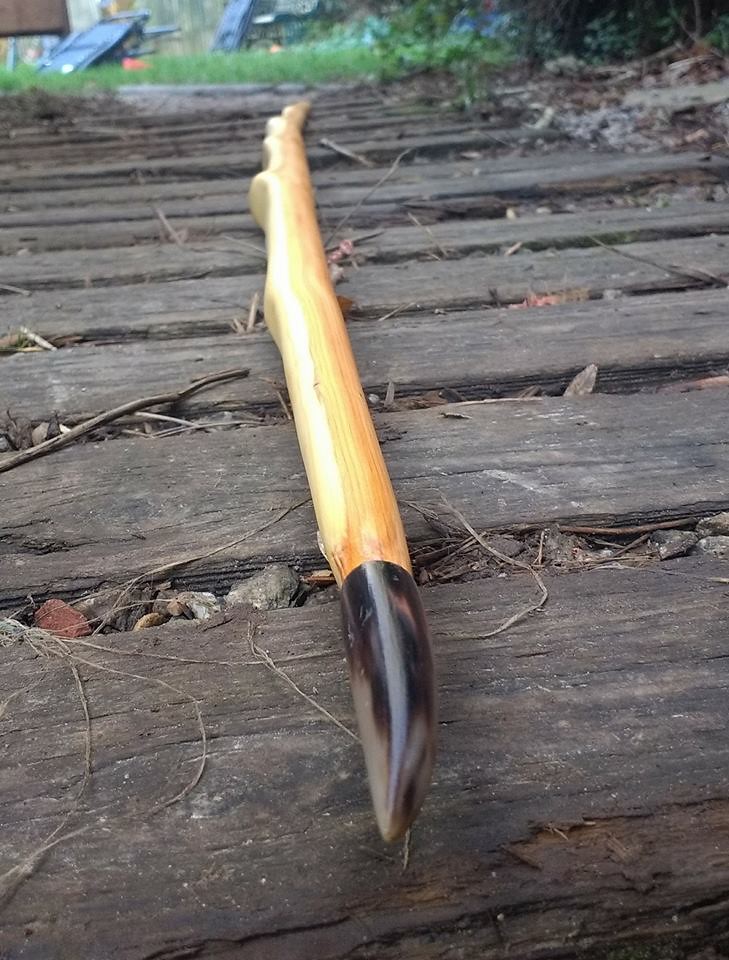This one was quite interesting, thought I'd stick it in here. I've been working quite closely with the Mary Rose Trust recently on getting some new arrow replicas made, but it's impossible to ignore the bows when you're able to fiddle with them. I took some measurements of this one which I know various people have copied with stunning results (one up to about 196lb I believe, but that could have been 79A1655 which is very similar).
The timber wasn't the best - in fact it was a trial stave from a new batch of yew I cut only last year so it's also not fully seasoned yet and should increase in weight a bit - and the result was a slightly disappointing 145lb at 30" but it's loaded at the front end and feels a lot more. It was "roughed out" to the exact measurements as a result required virtually no tillering. I think a few scrapes around an area of deflex that I'd left too thick and that was it. It's still exactly the same size in millimeters as my initial measurements, so it shows nicely how different timber can play a massive role in draw weight.
Cow horn sidenocks and a beeswax finish. The tiller pic was taken at around 25" as I don't like winch setups and had to hold the camera in one hand!
One of the pics shows the bow from directly above, with the heartwood showing on both sides. I've started to use this as an indication that the sapwood thickness is correct, and that the cross section of the bow matches the lovely "fat galleon" shape. With the sides swelling out past the back, and the sapwood taken down to an absolute minimum (I think about 2 rings in total on most of the bow where possible) you end up exactly like the original bows. Unfortunately many parts of this stave were a bit characterful, and the belly was splitting and checking so I had to leave more sapwood in some areas to avoid the bad bits.




